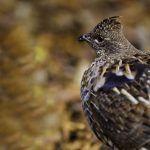Pheasants 2018 Traveling Wingshooter
The pheasant picture is one of long-term (CRP decline) and short-term (weather) storylines. The shrinking CRP footprint has been well-documented, perhaps to the point of exhaustion, but the magnitude of loss in the top 10 pheasant states is still shocking. In 2007, 18.88 million acres were enrolled in the Dakotas, Kansas, Iowa, Minnesota, Nebraska, Wisconsin, Illinois, Ohio, and Montana, according to data from the Farm Services Agency. Today, 8.13 million acres are enrolled in those 10 states. Granted, not all CRP acres were always great for pheasants, and some of those states may not even be the most important for pheasant hunting anymore. The point is that more than 10 million acres of idle grassland cover have vanished over the last decade.
The good news is that the CRP loss has largely stabilized in recent years; the total amount is down only 296,000 acres from this time last year. Better yet, the Dakotas received ample moisture this summer. It’s possible that the pheasant harvest in those two states could increase by a couple-hundred thousand birds from their 2017 combined harvest of 1.1 million pheasants. That’s meaningful!
In South Dakota, excellent late spring and summer precipitation has improved conditions after last summer’s epic drought, which resulted in an estimated harvest of only 828,709 pheasants, the lowest tally since 1990. The state was pounded by a blizzard and record cold temperatures in mid-April, but conditions since then have been very good, according to Travis Runia, South Dakota Game, Fish & Parks. “Overall, environmental conditions have been most favorable in the northeast and north-central, where June precipitation has not been excessive. This area was mostly spared by the historic mid-April blizzard.”
It’s a similar story in North Dakota, according to R.J. Gross, North Dakota Game & Fish Department. The pheasant harvest nose-dived from 501,000 roosters in 2016 to 309,000 last year as a result of the drought, but Gross says things look immensely better this summer.
In Kansas, pheasant populations this spring were slightly lower than last year, according to Jeff Prendergast, Kansas Department of Wildlife, Parks & Tourism. The state received very little rainfall from October through April, and things were looking grim at the onset of the nesting season. However, conditions dramatically improved this summer. “The summer rains delayed wheat harvest and increased weedy cover, providing excellent brood habitat across the pheasant range.”
Iowa was coming off a second consecutive reasonably good year with an estimated harvest of 221,000 pheasants, slightly below the 245,000 rooster tally of 2016. However, the late winter and cold, wet spring were not conducive to good pheasant recruitment, according to Todd Bogenschutz, Iowa Department of Natural Resources (DNR). “We experienced the tenth wettest June is state history. Our weather model is predicting a decline in pheasant numbers.
However, parts of eastern and southern Iowa missed the rain, so we could have some locally good pheasant hunting.”
In Nebraska, the April survey results revealed a 27-percent reduction for pheasants statewide from last year. The two regions with the highest pheasant densities, the Panhandle and Southwest, were down 15 percent and 42 percent, respectively, but the Sandhills were up 77 percent. Dr. Jeffrey Lusk, Nebraska Game & Parks Commission, said that the spring/summer weather was mixed: Excellent moisture early, a major snowstorm in mid-April, good late-spring precipitation, and then a hot summer. The July survey results (unavailable at deadline time) will tell the story for Nebraska.
Minnesota also experienced a late winter that delayed nesting, and then heavy rains in the southern portion of the state during June and July that may have impacted nesting, according to Nicole Davros, Minnesota DNR. However, Davros was optimistic that the summer moisture created excellent brood-rearing habitat with lots of insects. She said that weather impacts populations in the short-term, but habitat explains the long-term pheasant numbers in Minnesota.
The pheasant picture is rounded out by mixed reports in the West and the Upper Midwest regions. In Colorado, the spring pheasant crowing counts were excellent, and the wheat harvest was delayed by a week, which usually bodes well for pheasants, said Ed Gorman, Colorado Parks & Wildlife. However, the pheasant range has been hot and dry this summer, and reports from the field indicate smaller brood sizes. In 2017, Colorado hunters tallied 45,000 roosters, an 11-percent decline from the previous season.
Montana is coming off one of the worst pheasant years in memory, a result of the drought. Some portions of the Hi-Line of northern Montana received less than an inch of rain last spring and summer, and pheasant recruitment was essentially non-existent. Crowing counts were down 40 percent. The moisture was much better this year, according to my research and input from Jake Doggett, Montana Fish, Wildlife & Parks. Still, summer rainfall is likely to be below average, which bodes for a tough season.
As for the Upper Midwest, Illinois received record cold in April and record heat and rain in May/June so will likely be down. However, Ohio was relatively dry across the core pheasant range, which should increase nest and brood survival. According to Joseph Lautenbach, Ohio DNR, hunters can find decent numbers of wild pheasants within the Scioto River Watershed and in the northwest corner of the state. Pheasant populations are generally localized in areas with suitable habitat, including private lands enrolled in CRP and public hunting areas such as Big Island Wildlife Area, Deer Creek Wildlife Area, and Lake La Su An Wildlife Area.
Eblast Update: October 2018
South Dakota’s roadside surveys revealed a 47 percent increase over last year, up to 2.47 pheasants per mile surveyed, a function of good moisture and excellent habitat conditions following the epic drought of 2017 that torpedoed pheasant production across much of the state. The highest densities of pheasants were in the Chamberlain (5.29 pheasants per mile), Mitchell (4.23), Pierre (3.72), and Huron (3.61) areas, all of which increased from last year, led by a 95-percent spike in the Huron area. The harvest this season should exceed 900,000 pheasants. Kelly Hepler, South Dakota Game, Fish & Parks Secretary, was enthusiastic: “A substantial increase in the pheasants per-mile index is an exciting prospect for South Dakota’s 100th pheasant hunting season this fall.”
In Iowa, the statewide index of 20.6 birds/route is significantly higher than the 2017 estimate of 14.9 birds/route and 45 percent above the 10-year average. The highest counts were in the Central and Northwest regions, but production was also excellent in all three of the southern regions. The Central region surveys revealed 38.6 birds/route, 85 percent above the 10-year average and right at the long-term average. Good bets include Boone, Hamilton, Hardin, Poweshiek, Story, and Webster counties. The Iowa Department of Natural Resources predicts a harvest of up to 300,000 pheasants this season.
In Minnesota, despite severe spring snowstorms and excessive rainfall, this year’s range-wide pheasant index (45.5 birds/100 mi) increased 19 percent from 2017, and is similar to the 10-year average. The index varied statewide with 95 percent and 51 percent increases in the Central and West-Central regions, respectively, contrasted by a 36-percent decline in the Southeast region and a modest five-percent uptick in the Southwest region, the core of the pheasant range. The highest counts (65.1 birds/100 mi) were observed in the West-Central region. Good hunting is expected in the West-Central, Southwest, and Central regions.
Nebraska’s pheasant population is stable with the statewide population just one percent below the five-year average. Pheasant populations in the Sandhills increased by 78 percent and now are 30 percent above the 2013-2017 average! In the Panhandle, pheasant numbers dropped 39 percent from last year but are still 31 percent above the five-year average. The best hunting is expected to be in the Panhandle, Southwest, and Sandhills.
In Kansas, heavy spring rains and hail storms impacted nest success and brood survival, resulting in a significant pheasant decline, and this summer’s roadside surveys indicate a below-average pheasant population. However, keeping things in perspective, Kansas will likely remain one of the top states for pheasant harvest! The best bets this fall will be north-central and south-central Kansas.
It will be a tough year in North Dakota where the statewide survey revealed a two-percent decline in pheasant numbers. That only tells part of the story, though: Pheasant populations declined by 32 percent from last year in the Southwest region, the heart of North Dakota’s pheasant range. Populations increased by 63 percent and by nine percent in the Southeast and Northwest regions, respectively, but those regions were coming into the spring with very low populations. Harvest is expected to be similar to that of the drought-stricken 2017 campaign when hunters took 309,000 roosters.





